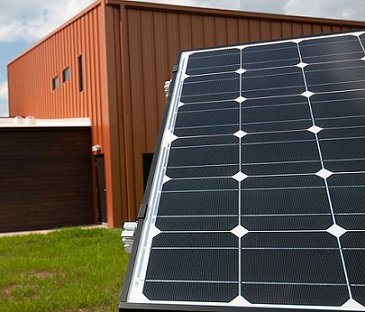We therefore need to know during the year the maximum and minimum altitude of the sun at midday in order to discover how many degrees our panels have to be tilted.
4 degree differnece for solar panel.
All solar panels these days come with a standard test conditions stc rating which is the amount of energy those panels can actually produce during peak sun hours.
Many roofs are going to have slopes between 30 and 40 degrees which means that solar panels can lie flush against the roof and produce enough electricity for attractive returns.
Let s start with two key terms.
Today we re going to explain how to mount your solar panels to get the most energy from them.
The correct angle for solar panels can make a huge difference in the productivity levels of your panels.
Once fully ready to be installed each panel may lose its efficiency if the silicon cells in the solar panel reach more than 77 degrees fahrenheit.
So far this year the day on which i had the highest production was a perfectly clear day in may.
We know that during peak sun hours a solar panel should theoretically produce 1 000 w m 2.
If you are trying to install solar panels on a steep roof it may not be possible to place panels at the optimal tilt with traditional racking systems.
The maximum energy production is achieved at midday when the sun reaches its maximum altitude on the horizon.
Some degree of tilt 3 to 4 degrees is best able to help keep solar panels clean when it rains.
The vertical tilt of your panels.
I d appreciate it if you didn t call them the same product makes it sound like the same exact thing even though they are not.
In general most solar panel coefficients range between minus 0 20 to minus 0 50 percent per degree celsius.
As i said earlier the more a solar panel is perpendicular to the sun s rays the more it produces electricity.
How hot do solar panels.
Elevation angle and azimuth angle commonly shortened to angle and azimuth for brevity.
That is why all solar panel manufacturers have to provide a temperature coefficient pmax along with their product.
For example if your solar panel lists a power temperature coefficient of 0 30 this means that it produces 0 30 less power for every one celsius degree increase in temperature.
Nec 690 explains the difference.
Technology has improved to install non penetrating ballast systems to prevent leakage.
The closer this number is to zero the less affected the solar panel is by the temperature rise.
Welcome to another entry in our ongoing solar 101 series.
If you want a specific spot with definitions it s 690 2 they are not the same a solar cell is a smaller part to a module and a module is a smaller part of a panel and a panel is a smaller part of an arrey.
Flat roofs that are truly horizontal can have a ballast or attached system put in place to create a pitch of at least 10 degrees.
Polycrystalline silicon solar panels.
So let s take a look at the best angle for solar panels for maximum efficiency in your region.



























